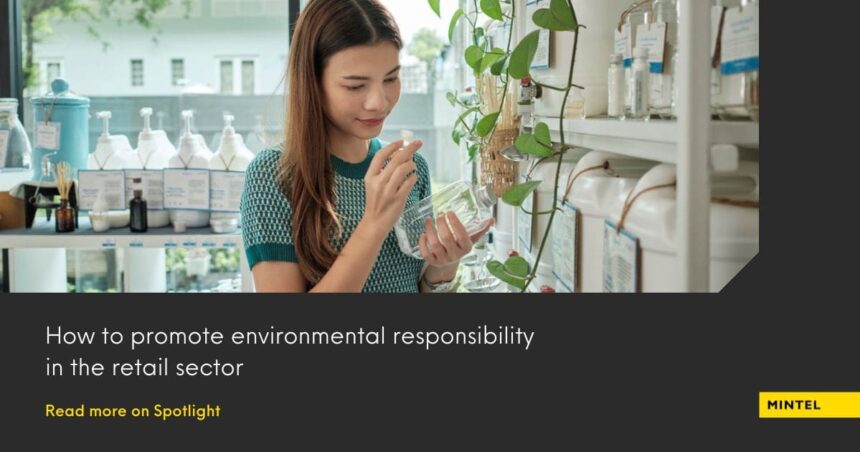We’ve long known that the climate crisis is upon us, and its economic impact is undeniable. Overall financial losses in 2022 due to climate change were estimated at $270 billion. In Australia, extreme rainfall in 2022 caused over $8 billion in damage. By 2100, sea level rises and coastal flooding could endanger assets worth up to 20% of the global GDP.
At this point, sustainability is no longer just a selling point but should be seen as an essential element of survival. The planet is facing the reality of an existential climate threat, which demands a radical and collaborative approach to address the challenges ahead.
With forward-thinking approaches, brands can reframe climate messaging from merely reducing carbon footprint to actively regenerating. Brands need to take tangible steps toward accountability with disruptive innovations that surpass conventional eco-friendly efforts.
Brands should take charge
According to Mintel’s Global Consumer survey, a median of 79% of consumers in Southeast Asia said they expected brands to take the lead on addressing environmental issues. One way to do so is for retail platforms to use their reach and educate consumers on how to adopt more sustainable habits.
For example, discounter Aldi Spain launched Sabrosas Sobras (‘tasty leftovers’), an AI-powered online platform that helped consumers reduce household food waste by creating recipes (client-only link).

Aldi Spain’s Sabrosas Sobras (‘tasty leftovers’) AI platform
Is cost an issue?
Sustainability-branded products are often seen as more expensive. In China, 39% of consumers said eco-friendly beauty/grooming products are too expensive. To combat this, brands need to explain the value of adopting sustainable habits, in particular outlining the cost savings in the long run.
Brands can also communicate through cost – and not just by lowering it. In Germany, multinational discounter Penny’s Wahren Kosten (‘true cost’) campaign raised the prices of nine private-label food products in all stores for one week to highlight their hidden environmental costs. German discounter Lidl dropped the prices of its Vemondo vegan private label so that they were priced the same or lower than its Milbona dairy and Metzgerfrisch meat private labels.
Discount chain Penny’s ‘true prices’ campaign
Go local
With global instability causing ingredient shortages, shipping delays and more, sourcing internationally now means higher costs. To mitigate this, brands can look towards working with local partners and suppliers instead. This would also be in line with consumers who are looking to support local – in Indonesia, 76% of consumers said they try to buy locally-grown food all or most of the time.
Brands can make it easier for consumers to support local sustainable ventures. Take for example Singapore’s SG Fresh Produce Badges, which help consumers to identify locally and sustainably-grown produce.
Multinational brands can also localize their sustainability efforts to take up the slack. Patagonia organised the ‘618 No Shopping Market’ in Shanghai which invited consumers to participate in guided recycling and outdoor activities instead of partaking in the 618 shopping festival.
Patagonia’s ‘618 No Shopping Market’
Different strokes for different folks
Given that all brands have different resources and products, achieving sustainable operations will look just as different. Sustainability is not one-size-fits-all. Instead, what all brands can do is break sustainability down into smaller, trackable goals to make it understandable and relatable for consumers via on-pack communications, eco-label claims and clearly identified sustainable zones on retail platforms.
Environmental non-profit The Recycling Partnership launched an app that allowed users to scan products to see if and where they can recycle them. With the app, consumers could scan a QR code on certain products to determine recyclability. Thai Union Group partnered with Sustainable Fisheries Partnership and opened up its entire supply chain for auditing to boost the credibility of its sustainability initiatives.
The Recycling Partnership’s ‘Recycle Check’ app
While sustainability can seem like an abstract goal, brands can set clear, concrete goals with a fixed timeline. Brands can show consumers their investments and long-term campaigns, identify clear commitments and targets, and openly recognise areas to improve.
Unilever’s 10-year Sustainable Living Plan outlined its sustainability commitments and targets. In its plan, Unilever identified nine overall areas to work on for sustainability. Although the plan outlined over 70 targets, each target was clearly defined and easily understandable. As part of their campaign, Unilever also reported on their progress every year.
What we think
Brands have the opportunity to take the initiative and show their commitment to reducing their impact on the planet. Start by reaching out to consumers, and make sustainable options accessible to all – regardless of income levels.
Partnering in local sustainable efforts will also show commitment and investment in local communities, gaining consumer support. To give consumers more confidence, set trackable sustainability goals that are easily understandable, and be accountable for them.
This topic was presented at the Retail Asia Summit 2023. Dive deeper into the discussion by downloading the content here and uncover valuable insights on promoting sustainable practices in the retail sector.








